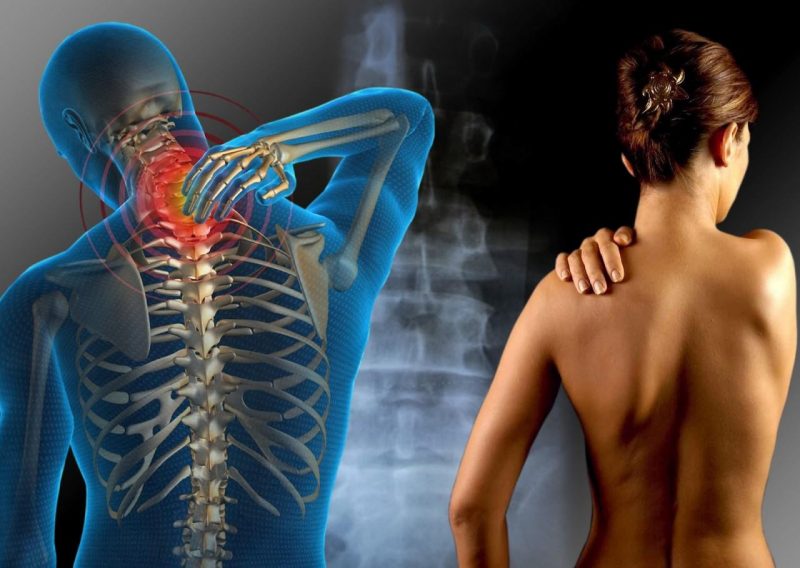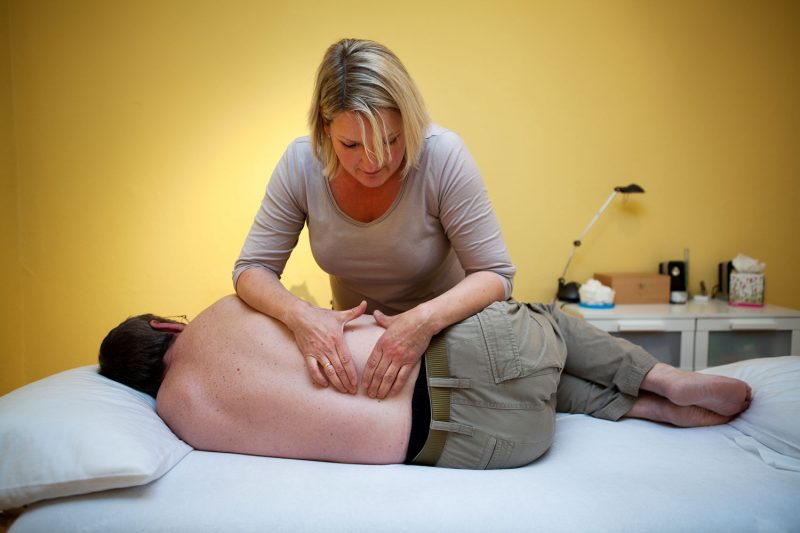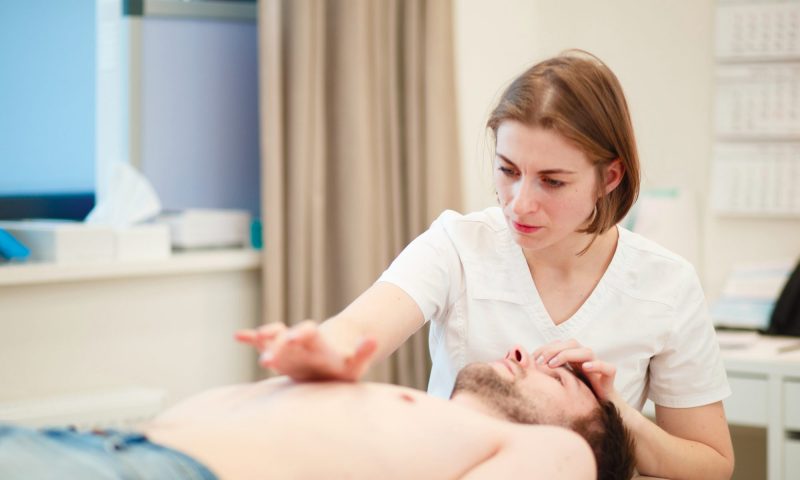Nowadays, you can increasingly meet doctors specializing in the fields of alternative medicine. And it is advisable for each of us to know about such types of therapy, because it is possible that someday in life you will have to turn to them for help. In today's article we will talk about one of these areas - osteopathy, what it is and what the doctor treats an osteopath, you will learn in detail.
Material Content:
What is osteopathy?
Diagnostic methods for the treatment of structural and anatomical problems, including individual organs, determined by the sensitivity of the specialist’s hands, are osteopathy.

For a long time this direction of medicine has official scientific recognition. Some techniques are successfully used in neurology by specialists from around the world. In Russia, osteopathy belongs to the field of manual therapy, but is not available in all medical institutions.
Bioenergy with homeopathy, reflexology with the techniques of Chinese traditional medicine are used by osteopaths in medical practice. Although not all of these areas, their effectiveness and efficiency, have a scientific basis.
And those doctors who use osteopathy methods in their work talk about the complexity of this area, which requires a long study. At the same time, to comprehend all its basics is necessary only with the existing higher medical education and thorough knowledge of all the subtleties of the human body.
There are several types of osteopathy, depending on the direction:
- baby: aimed at correcting identified pathologies in infants at birth;
- visceral: restores ailments of the respiratory system, pelvic organs and chest. This also includes diseases such as childhood enuresis, pancreatitis and cholecystitis, high blood pressure, gynecological and prostatitis with prostate adenoma;
- structural: aimed at the pathology of the musculoskeletal system and the consequences of various injuries;
- cranial: eliminates the problems of brain structures, central nervous system, spinal cord and sacral region;
- cranial: It is considered a very subtle direction, relieves stress and psycho-emotional overstrain.
It is interesting: blood pressure: normal age table
The general direction of osteopathy improves well-being, revitalizes body systems and tissues, reduces muscle tone and normalizes the reflex connection of nerves and muscles.
What does an osteopathic doctor treat?
A person with a higher medical education in areas such as a therapist, traumatologist, neurologist and orthopedist can be considered an osteopath. At the same time, he must undergo additional training at a higher educational institution of osteopathy. All this is confirmed by relevant diplomas and state certificates.
Do not trust your body to a specialist who does not have all of the above documents, but shows only a masseur diploma. It is advisable to consult a doctor with experience in the field of osteopathy from 3 years or more.
What treats an osteopath in adults

You can consult an osteopathic doctor with the following health and well-being problems:
- Existing disorders of the musculoskeletal system, including the spine.
- Ailments of CVS and any pain.
- Malfunctions in the hormonal sphere and psycho-emotional disorders.
- Sleep problems, hypotension, hypertension, and dizziness.
- Any injury and overweight.
- The development of the body not by age is a delay.
- Diseases of the digestive system and gynecological sphere.
- ENT diseases.
Swelling, toxicosis during pregnancy are also included in the list of health problems. But in fact, there are no boundaries for osteopathy, since the possibilities of this area of medicine are huge.
Osteopath for the baby
Timely identification of pathologies and their elimination immediately after birth will protect against undesirable consequences in the future life of the baby.

Indications for contacting a specialist are:
- for preventive purposes, especially after cesarean section, on 1-2 weeks after birth. It is during this period that it will be possible without consequences to correct some pathologies that are not noticeable to pediatricians;
- getting injured or bruised during childbirth, even if the X-ray values are normal;
- if the baby is constantly crying for no reason;
- excessive irritability, sleep problems, colic, and if the child spits up too much and too much;
- deformation of the skull after the use of forceps, forced manipulations with the body of the newborn and vacuum extraction;
- diseases of the ENT organs and digestive systems;
- if the birth occurred with gluteal or facial presentation;
- with blockage of the lacrimal canal, strabismus and other visual ailments;
- perinatal encephalopathy and body paralysis;
- allergic reactions and epilepsy;
- prematurity and trisomy.
An osteopath for a baby will be useful if obstetrics has occurred with the use of stimulation, too quickly or for too long.
Important: the fact that you visit an osteopath is good, but you cannot cancel the prescribed treatment for a pediatrician.
It is recommended that you seek such a doctor immediately after leaving the maternity hospital - the sooner he examines, the less problems you will have with the baby in the future.
Children's osteopath

Diagnosis and treatment of diseases in older children using an osteopath is indicated in the following cases:
- If there are negative health effects after surgery.
- With neurosis and other problems of a neurological nature.
- With diagnosed encephalopathy.
- If there is a delay in the development of speech, as well as a lag in psychomotor skills and intelligence.
- With various curvatures of posture and torticollis.
- With flat feet and hypertension-hydrocephalic syndrome.
- If the child is often ill with colds.
The skills and knowledge of a child osteopath will be useful to a child suffering from ailments of the digestive organs and ENT.
Indications and contraindications for treatment
The uniqueness of such procedures is in the positive impact not only on health and well-being in general, but also on appearance:
- with normalization of the position of internal organs, the abdomen decreases;
- curing the spine and restoring the muscular system, beautiful posture will return;
- Having restored the activity of the liver with the intestines and the entire digestive system, metabolic processes are normalized, the appearance of the skin will improve, wrinkles will decrease, bags under the eyes will disappear.
You need to visit an osteopath up to 2 times a week and only go through 4-8 sessions. Such a short treatment time is due to the fact that the applied techniques trigger self-regulation mechanisms in the body, allowing it to recover on its own after 7 days.

There is a reason to sign up with an osteopathic doctor for problems such as ailments of the joints, spine and muscles, as well as:
- Various injuries, including craniocerebral.
- Migraines and headaches, regularly tormenting for various reasons.
- Disturbed cerebral circulation and VVD.
- Gastrointestinal diseases and disorders of the internal organs of a functional nature.
- Various mental disorders and chronic fatigue syndrome.
- Hormonal malfunctions in the body and problems in the sexual life of both men and women.
Despite the small likelihood of harm by using the methods of osteopathy, there are still a number of contraindications to this kind of treatment:
- a period of exacerbation of infectious ailments and chronic;
- any malignant tumors;
- severe osteoporosis and other bone pathologies;
- acute cerebral circulatory disorders and spinal cord compression syndromes;
- spinal strokes and with an unclear diagnosis;
- mental disorders and the patient’s refusal of treatment.
It is not advisable to manipulate with acute pain and abnormalities of the craniovertebral zone with the cervical spine. With diagnosed ankylosing spondylitis, diseases of the internal organs in the stage of decompensation, similar procedures are also not recommended, including ischemia, arterial hypertension, arrhythmia and senile age.
Necessary tests when contacting an osteopath
When you come to the osteopath’s appointment, tell him about all your worries to the smallest detail, even if at first glance they seem absurd. After all, the doctor does not treat a specific part or area of the body, he acts on all systems, including the mental and emotional.

If you have any tests or pictures on hand, take them with you. But you don’t need to hand over anything specifically. If necessary, the doctor will refer you to other specialists or do some research to clarify the diagnosis.
What is the difference between osteopathy and manual therapy?
Very often, these two types of therapy are considered the same direction in medicine. But this is an erroneous opinion. Their similarity lies in obtaining basic medical and additional education. Well, also the tool they use is hands.
Let us consider in detail the difference between an osteopath and a chiropractor:
- The fight against symptoms is carried out by the manual, the osteopath with the cause of the problem.
- The impact of the first - on the vertebrae to relieve pain, the second - on the correction of organs through the use of neurological adaptation mechanisms.
- The methods of the manual are reduction, indentation and stretching, and the osteopath is a soft effect on the muscles and ligaments.
That is, in manual therapy, the task is to quickly and efficiently relieve a person from pain, and in osteopathy - the elimination of the cause, tuning the body to self-healing and minimizing the likelihood of relapse.
Is osteopathy quackery?
Osteopathy, is it charlatanism or not, you probably already understood. The main thing is to fall into the hands of a real professional, since an osteopathic doctor with his own hands invades the inner world of your body.
But, unfortunately, not everyone who calls himself an osteopath is such.
To recognize the real docks in your case from a charlatan, you must pay attention to the following points when visiting a doctor:
- a diploma of higher medical education, plus he must complete an internship or residency in one of such specialties as neonatology, pediatrics, gynecology, neurology, traumatology and others. And it would be better if there were several;
- availability of a certificate of special education with exams passed by the osteopath profession, for which he must study for at least 4 years;
- knowledge of many techniques of their professional field and the ability to approach each patient individually, with the ability to select a personalized treatment regimen;
- the specialist must be registered with the osteopathic association of doctors. It is checked very simply - you need to go to this site and find its data. If you did not find a doctor there, draw appropriate conclusions;
- an osteopath should work in a serious clinic with a good reputation, because no self-respecting medical institution will not hire an employee without high qualifications;
- osteopathic procedures are carried out in several stages with short breaks. That is, unlike a massage therapist, an osteopath will not prescribe daily sessions for you.
The presence or absence of all these points will let you know who is a real professional or amateur in front of you.
How to find an osteopath and the price of admission
If you understand that you need an osteopath, it is important not only to find such a doctor, but also an experienced qualified specialist. In addition to the above recommendations, you can also add reading reviews.
Do not chase the low price, since the cost of admission of a professional in this area varies from 2500-9000 rubles. And to get advice, you will have to pay from 1,000 to 2,000 rubles.

A medical consultation costs about 12,000, and if you need to call a doctor home, then 8000-15000 rubles.
As you can see, the cost of the services of a real specialist cannot be low, so do not save on your health, but only contact a professional. This will improve and maintain health for many years, and maybe a lifetime.
- Sergey Vladimirovich












